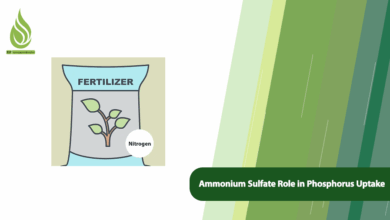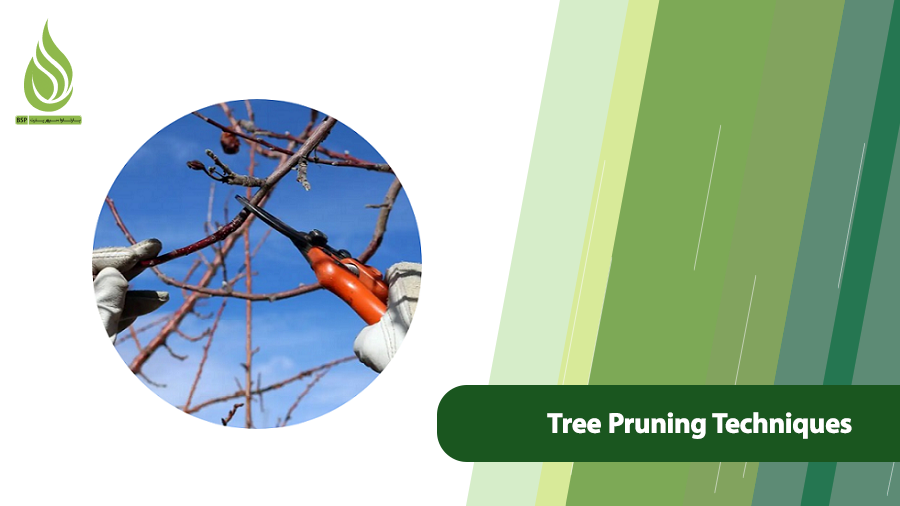
Effective Tree Pruning Techniques to Enhance Productivity
Pruning trees is an effective way to improve fruit yield and enhance the quality of the fruits. Proper pruning not only helps with better light exposure and air circulation but also reduces pests and diseases. However, many farmers and gardeners are still unfamiliar with effective tree pruning techniques.
In this article, we will explore various methods and techniques for pruning trees, showing how proper pruning can boost both the yield and quality of fruits.
What effect does pruning have on the fruit yield of trees?
Pruning trees is one of the most effective ways to increase fruit yield and improve the quality of the fruits. Let’s take a look at how pruning impacts the yield of trees.
- Improved Light Exposure: Proper pruning allows more light to reach the branches and leaves. With enough light, photosynthesis and energy production improve, leading to increased fruit yield.
- Growth Control: By pruning, unnecessary and excess branch growth is reduced. This means that the tree can focus more energy on producing fruit. One of the secrets to maximizing grape yield is this very principle.
- Strengthening Tree Structure: Correct pruning helps strengthen the tree’s structure and stability. When a tree has a good structure, it’s less likely to get damaged during fruiting, making it more resilient against wind and rain.
- Improved Fruit Quality: Pruning enhances the quality of the fruits because more nutrients are available for the remaining branches.
- Reduction of Pests and Diseases: Better airflow and light around the tree help lower the risk of fungal diseases and pests, which contributes to better fruit yield.
- Even Distribution of Fruit Load: Pruning helps distribute the fruit load evenly across the tree. This uniform distribution promotes better fruit growth and reduces stress on the branches.
- Encouraging New Growth: Pruning away older branches encourages the growth of new ones. Younger branches have more energy to produce fruit.
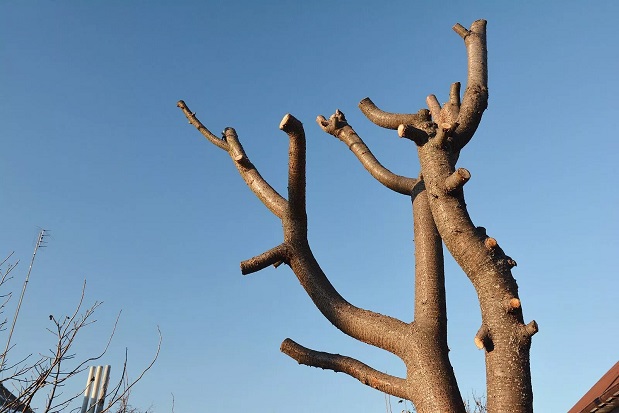
The Right Time for Pruning Trees
Pruning trees can be done at different times, and the best time to prune depends on the type of tree, the climate conditions in your area, and the purpose of the pruning. In terms of timing, we can categorize tree pruning into two main types:
- Fruit Pruning: This includes dormant pruning, winter pruning, and dry pruning. These methods are typically done when the tree is not actively growing, which helps promote better fruit production.
- Shaping Pruning: This includes green pruning and summer pruning. These techniques are used during the growing season to shape the tree and encourage healthy growth.
1. Winter Season (Fruit Pruning)
Fruit pruning is typically done from late winter to early spring, right before the buds begin to open. This type of pruning has a significant impact on the growth and fruit production of trees. During this time, the trees are still in a dormant state, so pruning won’t stress them out. This is when we focus on removing dead, diseased, and excessive branches, as well as pruning the roots. Removing these unwanted branches helps strengthen the tree for the growing season ahead.
As the cold weather lessens in late winter and early spring, cutting branches is less likely to cause frost damage. Plus, without leaves on the tree, it’s easier to see which branches are extra or growing at awkward angles. It’s important that pruning is done by someone skilled in the practice; improper pruning can do more harm than good to the tree.
For evergreen trees like cypress, camellia, boxwood, and pine, which don’t enter a full dormant state but instead go semi-dormant in winter, it’s best to prune them in late winter. However, summer pruning is also possible for these trees.
Winter pruning should be done annually for certain fruit trees like walnut, while for younger trees, it can often be done every two years.
How often and in which month you should prune depends on the local climate and the type of tree. If you’re unsure, it’s a good idea to consult an experienced farmer or agricultural expert. Some trees are very sensitive to cold, so they must be pruned in late winter or early spring. Others, like apple trees, are less sensitive and can be pruned during winter.
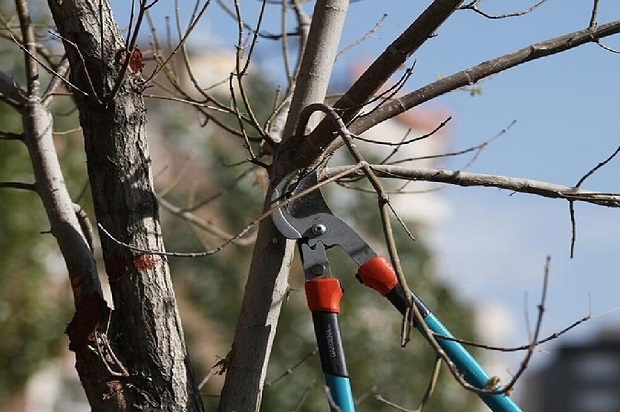
2. Summer Season (Shaping Pruning)
Summer pruning is done to control tree growth, reduce density, and shape the trees. This includes removing extra flowers and fruits, trimming the tips of fast-growing branches, cutting away excess leaves, removing suckers, creating small cuts on the trunk, and performing decorative pruning.
Shaping pruning improves light exposure and airflow within the trees. Typically, summer pruning is done in late summer or early fall, after the fruit has been harvested. Pruning at this time helps prepare the tree for its dormant season. However, it’s important to avoid heavy pruning to prevent harming the tree.
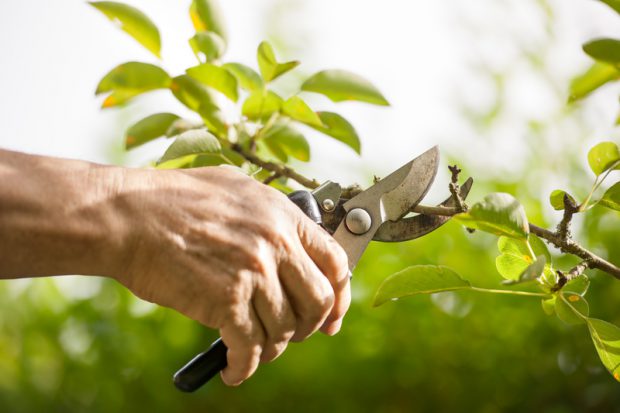
Types of Tree Pruning
Tree pruning can be divided into several categories, each with a specific purpose. Here’s an overview of the different types of tree pruning:
Branch Pruning
There are two main methods of branch pruning: topping and complete removal. Topping involves cutting off the end part of a main branch, while complete removal means taking the branch off entirely from the trunk. Complete removal typically targets weak, thin, or crooked branches. The goals of branch pruning include creating a proper structure for young trees, increasing fruit yield and quality, maintaining tree health, removing damaged branches, improving and restoring injured trees, controlling growth, enhancing light exposure, and stimulating the growth of side branches.
Flower and Fruit Pruning
When a tree produces too much fruit, it may not have enough energy to produce high-quality crops. In these cases, some farmers prune flowers and fruits to promote the growth of quality produce. This approach ensures that the tree has enough nutrients available for the fruits, allowing them to grow better.
Bark Pruning
This type of pruning usually takes place in early summer. Bark pruning involves making small wounds on the bark of branches or creating parallel scratches below the buds. Another method involves cutting a narrow ring of bark around the branch and placing it upside down in the same spot. This technique helps store growth hormones and carbohydrates within the branch, which can turn a barren branch fertile and strengthen a weak one over time.
Root Pruning
Root pruning is a type of pruning that is done less frequently. For this method, a circular area is created around the tree’s canopy, and the soil is dug down to a depth of about 30 to 45 centimeters. The extra roots, which are typically thin, weak, or unhealthy, are cut away. This process helps the tree focus its energy on growing the tree and its fruit, preventing excessive root growth.
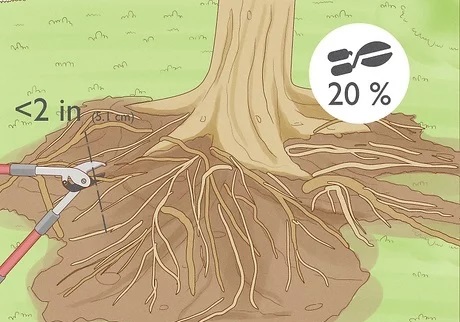
Important Tips for Tree Pruning
Tree pruning is a delicate process that requires care, knowledge, and experience. Here are some key points to keep in mind:
- Understanding Your Tree: Each type of tree has specific methods and timing for pruning. Familiarizing yourself with the characteristics of your tree will help you choose the best pruning approach.
- Use Proper Tools: It’s essential to use sharp, standard pruning shears and saws. Sharp tools minimize damage to the tree’s tissue and create clean cuts.
- Sanitize Your Tools: Before you start, make sure to disinfect your tools to prevent the spread of diseases.
- Choosing the Right Tool: For small to medium branches, use pruning shears. For larger branches, opt for a handsaw or a power saw to make the job easier.
- Seal Cuts: After pruning, consider covering the cut areas with a protective substance like tree wound dressing to prevent contamination.
- Remove Damaged Parts: During sanitary pruning, removing dead, diseased, or damaged branches helps keep the tree healthy and prevents disease spread.
- Maintain Natural Structure: Pruning should be done in a way that preserves the tree’s natural shape. Aim to shape the tree in a balanced and aesthetically pleasing manner.
- Avoid Heavy Pruning: Excessive pruning can harm the tree and reduce its fruit yield. Always prune cautiously and only as much as necessary.
- Consider Other Factors: Keep in mind that pruning alone won’t guarantee improved productivity. To enhance fruit quality and yield, factors like fertilization, proper watering, favorable weather conditions, and disease control must also be considered.
- Timing for Young Trees: After planting seedlings, they may not require pruning for some time. The timing for pruning will depend on the type of seedling and the growth status of its branches. Consult experienced farmers to determine the best pruning time based on your local climate and the specific needs of your seedlings.
By following these tips, you’ll help ensure your trees remain healthy and productive!
